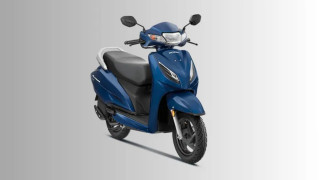
Ola (X)
India’s once-dominant electric mobility player, Ola Electric, is navigating through rough financial terrain. In a major financial setback, Ola Electric reported a two-fold increase in its losses, signaling troubling times not only for its EV segment but for its overall business portfolio.
From January to March 2025, Ola Electric’s losses ballooned to ₹870 crore, more than double the ₹416 crore loss recorded during the same period in FY24. Despite ambitious growth plans and aggressive investments, the company’s financials tell a story of rising expenses and declining returns.
Once hailed as the top electric two-wheeler brand in India, Ola Electric has now slipped to the third spot. The company had claimed leadership in FY25 with 3.59 lakh e-scooters sold, but declining monthly sales are painting a different picture.
Competitors TVS and Bajaj have overtaken Ola, leveraging better after-sales service and consistent product delivery.
The ride-hailing segment, rebranded as Ola Consumer, has also shown signs of struggle. Despite being a pioneer in India’s app-based cab services since 2010, Ola’s cab business saw a 5.5% decline in revenue, closing FY24 at ₹2,012 crore, down from the previous year. With competition intensifying from Uber, Rapido, and local startups, Ola’s core business is no longer its crown jewel.
Ola entered the used car market in October 2021 under the Ola Cabs brand. However, the business shut down within months. While thousands of users engaged with the platform, the company decided to exit and focus instead on its core areas EV manufacturing and mobility services.
Ola’s foray into food delivery through Foodpanda (acquired in 2017) also ended in disappointment. The company eventually shuttered the business due to low traction. Now, Ola has shifted gears with Ola Dash, a 10-minute food and grocery delivery service. Though the segment is rapidly growing, Ola Dash faces stiff competition from Zepto Café, Swiggy Bolt, and Blinkit’s Bistro, making profitability an uphill battle.
Ola Electric debuted on Indian stock exchanges on August 9, 2024, with a price band of ₹72–₹76 per share. Despite strong interest (IPO subscribed 4.45 times), the stock’s performance has been turbulent. On May 29, 2025, shares were trading at ₹53.24 a 30% drop from the issue price. Investors are growing cautious due to rising losses, uncertain growth, and increasing competition.
From being a unicorn startup disrupting mobility to struggling for market share and profitability, Ola’s journey highlights the challenges of rapid expansion without sustainable execution. As the EV race intensifies and consumer preferences evolve, Ola must rethink strategy, focus on core strengths, and deliver consistent value to retain investor and consumer trust.













Copyright © 2025 Top Indian News
